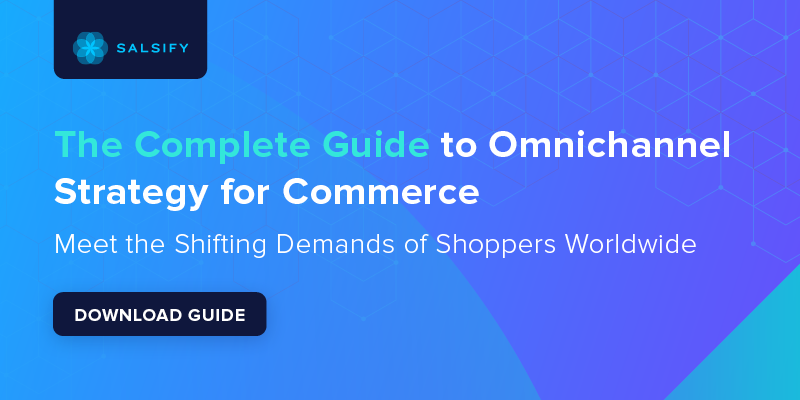10 Ecommerce Growth Hacks To Drive Online Sales, Customer Engagement, and Brand Visibility
Written By: Nicole D'Angelo
Does your ecommerce strategy need some fresh energy?
It’s natural to adjust your ecommerce strategy now and then, whether you’re looking to correct a slump or drive faster growth. Fortunately, there are plenty of ecommerce growth hacks that even the most established retailers and brands can use to bring a new burst of energy to their digital shelf.
This collection of 10 ecommerce growth hacks ranges from quick fixes to long-term strategy adjustments, from website touch-ups to customer engagement enhancements. Whatever challenges your brand or retailer may face, use this list to inspire your next growth strategy.
1. Optimize Page Loading Speed
Did you know that search engines penalize web pages that load too slowly? If your product detail pages (PDPs) take too long to load, you’ll likely lose shoppers using search engines to your competitors’ pages.
Shoppers also hate when pages load too slowly. Half of all shoppers will leave a page if it takes more than six seconds to load, according to Digital.com.
To keep shoppers on your pages, work with your web development team to make your site faster. It may be tempting to remove images or videos as a quick fix, but that will only harm customer engagement. Instead, source more technical ideas from your developers, such as compressing images or using browser caching.
2. Encourage Cart Recovery
Cart abandonment rates will always be high in ecommerce, but you can lower them by encouraging cart recovery.
To do this, consider sending users who abandoned their carts an email encouraging them to complete their purchase. You could even offer coupons or free shipping to entice them to finish the sale. Or, the next time they visit your site, you could deliver targeted ads that highlight products they almost purchased last time.
Shoppers who put items in their carts have already shown a clear interest in your products. Gently nudging them back to your digital shelf is a great ecommerce growth hack for closing more sales.
3. Grow Consumer Trust with Social Proof
When given the choice of whether to listen to product recommendations from a brand or a peer, 83% of shoppers are more likely to listen to their peers, according to Nielsen.
Anything you can do to simulate peer recommendations on your PDPs can help grow your ecommerce business. A classic example? Customer reviews. You may even want to feature some of your best reviews as testimonials. A report from Brand Rated shows that 95% of people read online reviews when shopping and 58% would pay more for a product with good reviews.
User-generated social content is another excellent source of social proof. You can develop a campaign that encourages users to post about your brand or simply watch for and share relevant organic posts.
4. Enhance Your Product Pages With Videos and Detailed Images
Every product page has product pictures — but not all pictures are equally compelling. To catch shoppers’ attention and help them feel confident in their purchases, use multiple attractive, detailed images, including close-ups and pictures of your products in use.
Embedding videos on your PDPs is another helpful ecommerce growth hack. Not only do videos have the potential to be more engaging, but showing people using your product in real-time could help shoppers understand if it’s right for them.
Finally, don’t underestimate the value of being visually appealing. Image and video content that’s pleasant to look at is more likely to spur growth than dull, forgettable pictures.
5. Optimize SEO Regularly
Search performance is a major contributor to your brand’s ecommerce growth. To get more shoppers on your page, be sure to check essential search engine optimization (SEO) elements, like using keywords effectively.
You likely optimized SEO for each product page when you first built your digital shelf. But SEO is constantly changing, and search engines are getting more discerning every day. What worked a couple of years ago probably doesn’t work as well anymore. So if you’re seeing slower growth or a dip in page visits, try reading up on the latest SEO developments and updating your pages.
6. Leverage Unique, Targeted Content
There are certain types of product content that shoppers just assume they’ll see when searching for items: copy, images, reviews, and so on. Then, there are rarer types of content that shoppers are more likely to be surprised or intrigued by. To grow sales, try creating more of the latter.
Enhanced content comprises a slew of eye-catching formats. Videos, charts, and interactive product tours can all help shoppers understand what makes your products special. Interactive quizzes and virtual try-ons can better engage shoppers while helping them make purchasing decisions they’re excited about.
Whatever type of content you use, the key is to grab shoppers’ attention and make their time on your PDPs more enjoyable.
7. Improve Your Personalization Strategy
Most brands and retailers already have some kind of personalization strategy in place. But in today’s competitive ecommerce landscape, they need more sophisticated personalization to spur growth.
To bring your personalization efforts to the next level, consider sending personalized emails based on past shopping habits that offer relevant deals. Or, take a closer look at the personalized recommendations on your page to ensure they’re actually useful. Personalization algorithms have come a long way over the years, so using an outdated one has the potential to slow growth.
8. Optimize Your Site for Mobile Commerce
Mobile commerce (mcommerce) is the future of online shopping. The mcommerce market creates $2.2 trillion globally and makes up 60 percent of all ecommerce sales, according to Statista. If your PDPs aren’t optimized for mobile, you’re losing sales.
Incorporating responsive design — or web design that’s suitable for both mobile devices and computers — into your PDPs is a key ecommerce growth hack. Some essential elements of responsive design include easy-to-find CTAs, a streamlined page design, and a collapsible navigation menu, among other things.
9. Use A/B Testing for Optimal Product Page Design
Interested in sprucing up your product pages but aren’t sure which ecommerce hacks will lead to the most conversions? It’s time to try A/B testing.
Testing different approaches to customer engagement, SEO, and other aspects of ecommerce optimization is always important for making data-driven strategy decisions. To make the most of A/B testing, don’t forget to obtain accurate and thorough data from a reliable analytics engine that summarizes the results.
10. Create Omnichannel Shopping Experiences
While plenty of shoppers just want to make quick purchases, many others want memorable shopping experiences that entertain them or make them feel valued. While great shopping experiences will look different depending on the brand and target audience, every customer experience strategy should focus on creating enjoyable, easy, and brand-appropriate shopper interactions.
Many of the best shopping experiences are omnichannel — or, at least, they can become omnichannel if the shopper so wishes. Omnichannel shopping experiences are those that blur the line between in-person, online, and mobile so that experiences across channels connect seamlessly.
Assess the quality of your shopper experiences, including whether it’s easy for them to continue those experiences across channels. Taking a careful look at these qualities will likely reveal opportunities for better customer engagement and, ultimately, faster growth.
Incremental Improvements for Continuous Growth
There’s always something to improve in any ecommerce strategy. Often, the keys to growth are a few simple hacks that can improve site design, customer engagement, and more.
Spurring growth for your brand’s digital shelf doesn’t have to be hard. But it does require small, consistent steps taken over time. Use these ecommerce hacks to get started.

The Complete Guide to Omnichannel Strategy for Commerce
Download our guide to find even more ecommerce growth hacks.
DOWNLOAD GUIDEWritten by: Nicole D'Angelo
Nicole D’Angelo (she/her) is a freelance writer, editor, and content marketer with over eight years of experience creating content for various industries. Previously, she managed content production for business-to-business (B2B) and business-to-consumer (B2C) brands, including Fortune 500 companies.
Recent Posts
What the Data Says About Consumer Interest in AI Shopping Agents
How Retailers Can Use Geolocation To Create Personalized Shopping Experiences
3 Examples of a Personalized Shopping Experience and How To Create Them
Subscribe to the Below the Fold Newsletter
Standing out on the digital shelf starts with access to the latest industry content. Subscribe to Below the Fold, our monthly content newsletter, and join other commerce leaders.

.svg)